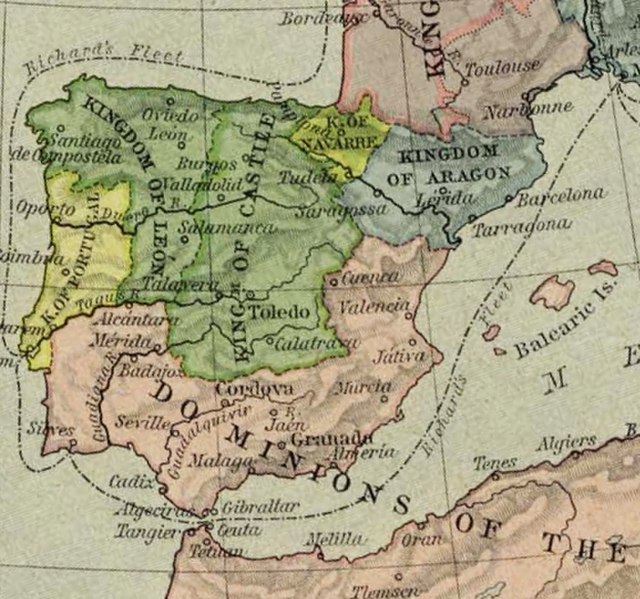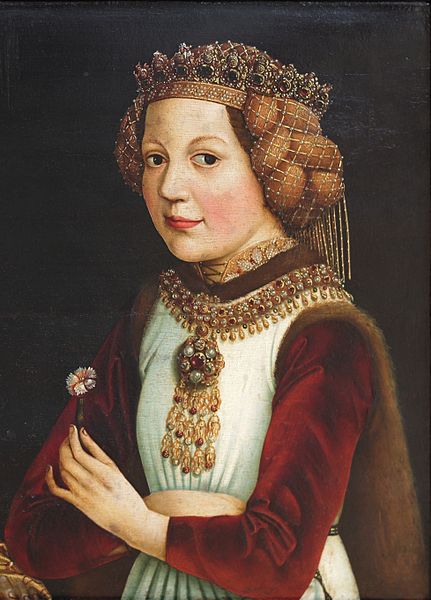Peter I of Aragon and Pamplona
Peter I was King of Aragon and also Pamplona from 1094 until his death in 1104. Peter was the eldest son of Sancho Ramírez, from whom he inherited the crowns of Aragon and Pamplona, and Isabella of Urgell. He was named in honour of Saint Peter, because of his father's special devotion to the Holy See, to which he had made his kingdom a vassal. Peter continued his father's close alliance with the Church and pursued his military thrust south against bordering Al-Andalus taifas with great success, allying with Rodrigo Díaz de Vivar, known as El Cid, the ruler of Valencia, against the Almoravids. According to the medieval Annales Compostellani Peter was "expert in war and daring in initiative", and one modern historian has remarked that "his grasp of the possibilities inherent in the age seems to have been faultless."

Peter receiving a shield emblazoned with St George's Cross. According to legend, George appeared on the field of battle at Alcoraz. The heads of four decapitated Moors found on the battlefield were added to George's familiar emblem, creating the Cross of Alcoraz (the basis for the Sardinian coat-of-arms).
Late and fanciful painting of Peter I. The hand on the sword is an accurate pictorial comment on his reign.
The Kingdom of Navarre, originally the Kingdom of Pamplona, was a Basque kingdom that occupied lands on both sides of the western Pyrenees, with its northernmost areas originally reaching the Atlantic Ocean, between present-day Spain and France.
Navarre (light green) in 1190
Sigil of King Sancho VII the Strong
Magdalena of Valois, regent of Navarre from 1479 to 1494, and mother of Queen Catherine I of Navarre
Jeanne III






